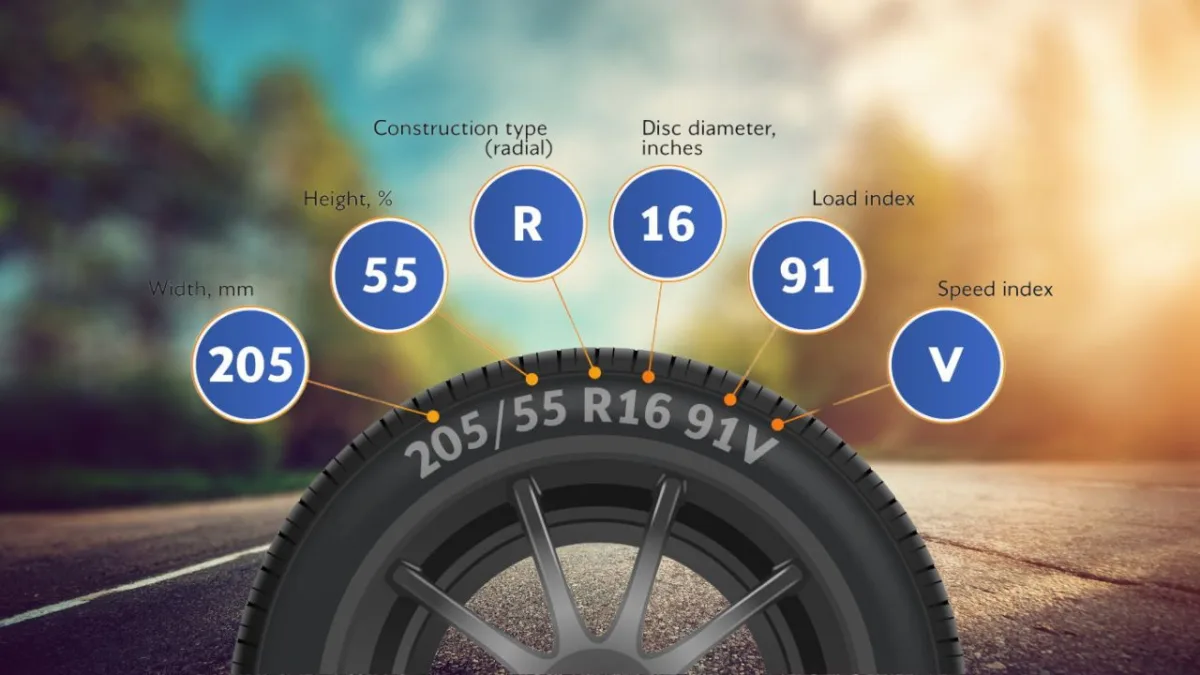Reading a tire size involves interpreting the alphanumeric code printed on the sidewall of the tire. This code provides crucial information about the tire’s dimensions and capabilities. Here’s a detailed breakdown of what each part of the code means:

Example Tire Size: 205/55 R16 91V
- 205 – Tire Width (in millimeters):
- This number represents the width of the tire from sidewall to sidewall, measured in millimeters. In this example, the tire is 205 mm wide.
- 55 – Aspect Ratio (Percentage):
- This figure indicates the ratio of the tire’s height (sidewall height) to its width, expressed as a percentage. In this case, the sidewall height is 55% of the tire’s width. A lower aspect ratio means a shorter sidewall and a sportier look.
- R – Tire Construction:
- The letter “R” stands for Radial construction, the most common type of tire design. This indicates that the tire’s internal layers are arranged radially, or perpendicular to the direction of travel.
- 16 – Wheel Diameter (in inches):
- This number shows the diameter of the wheel (or rim) that the tire is designed to fit. Here, the tire is intended for a 16-inch wheel.
- 91 – Load Index:
- The load index is a numerical code representing the maximum load the tire can safely carry when properly inflated. The number 91 corresponds to a load capacity of 615 kg (1356 lbs) per tire. Load index charts can provide specific weight capacities.
- V – Speed Rating:
- The speed rating is a letter indicating the maximum speed at which the tire can safely operate. In this example, “V” means the tire can handle speeds up to 149 mph (240 km/h) under optimal conditions. Other common ratings include S (112 mph), H (130 mph), and W (168 mph).
Additional Markings:
- M+S: Indicates the tire is suitable for Mud and Snow conditions.
- XL: Denotes an Extra Load tire designed to handle higher loads.
- DOT: The Department of Transportation code, which provides information about the tire’s manufacturing location and date.
Summary:
- 205 = Tire Width (mm)
- 55 = Aspect Ratio (%)
- R = Radial Construction
- 16 = Wheel Diameter (inches)
- 91 = Load Index
- V = Speed Rating
Understanding these markings is essential for choosing the right tires for your vehicle, ensuring safety, performance, and comfort on the road.
Follow INCPAK on Google News / Facebook / Twitter / Instagram









